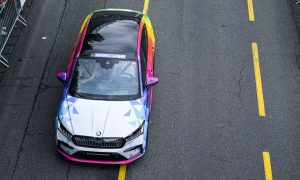
You have undoubtedly seen the commercials with automobiles slamming into walls with crash-test dummies launching into airbags. In many cases, these are real tests that the manufacturers perform on their cars for testing and safety rating purposes. The results of these deliberate crashes save untold numbers of lives each year by providing safety information for manufacturers and consumers alike. Ever wonder how all this works? Let’s take a look.
As Urse Dodge, Chrysler, Jeep, Ram of Fairmont explains all automobiles sold in the United States cars must pass four Federal Motor Vehicle Safety Standard (FMVSS) tests as mandated by the National Highway Traffic Safety Administration (NHTSA). In addition, NHTSA’s New Car Assessment Program (NCAP) provides relative safety rankings on a five-star scale. Another crash safety program is conducted by the Insurance Institute for Highway Safety (IIHS).Here are the tests that every car is subjected to:
FMVSS 208, FRONTAL IMPACT
The FMVSS 208 is the original crash test. It has been performed since 1968 but has undergone quite a number of changes since that time. Today it is a straight-on, full-width, frontal impact at speeds up to 30 mph. The FMVSS 208 is conducted with various sizes of unbelted dummies. The NCAP version of the test is conducted at 35m mph with belted dummies.
IIHS SMALL-OVERLAP FRONTAL IMPACT
The Insurance Institute for Highway Safety conducts a special test called the Small-Overlap Frontal Impact test. This test is slightly more realistic than the FMVSS 208 test because rarely are front impacts distributed across the entire front of a vehicle. The test is conducted at 40 mph and the vehicle hits a rigid wall contacting 25% of its front end.
Because of its angle, cars tend to rotate during impact, hurling occupants forward at an angle. In the first group test last summer, some dummies missed the front and side airbags, striking the vehicle’s A-pillar.
IIHS MODERATE-OVERLAP FRONTAL IMPACT
Similar to the Small-Overlap Frontal Impact test above, at 40 mph, the car strikes a barrier that overlaps 40 percent of its nose. The contact area is covered with a deformable aluminum honeycomb to simulate crashes into objects that deform slightly during impact. When the test was instituted in 1995, many vehicles scored poorly. Manufacturers improved results by reinforcing the passenger compartment and providing two robust load paths through the engine compartment.
FMVSS 214, SIDE IMPACT
In FMVSS 214, a 3000-pound moving fixture with a crushable front surface hits the side of the test vehicle at 33.5 mph and an angle of 63 degrees. This test is designed to simulate a 30 mph direct side impact accident.
FMVSS 216, IIHS ROOF CRUSH
In NHTSA’s FMVSS 216 AND IIHS TEST, a flat plate pushes down on the edge of the vehicle’s roof, which may deflect no more than five inches under a force of three times vehicle weight. The roof crush magnitude can exceed five inches if “sufficient” headroom remains for a 5-foot 9-inch occupant. As the new NHTSA standard phases in, expect thicker roof pillars and greater use of high-strength steel.
FMVSS 301
The FMVSS 301 test is not a occupant-safety test, FMVSS 301 ensures that fuel systems don’t spring major leaks during a crash. Observations are made after the FMVSS 208 and 214 tests. With its fuel tank 93-percent full, a car cannot leak more than an ounce of fuel per minute either resting on its wheels, its side, or its roof. For hybrid and EVs, the leak test also applies to electrolyte spillage.
Previous article
Finally a Jeep Wrangler Pickup Truck


